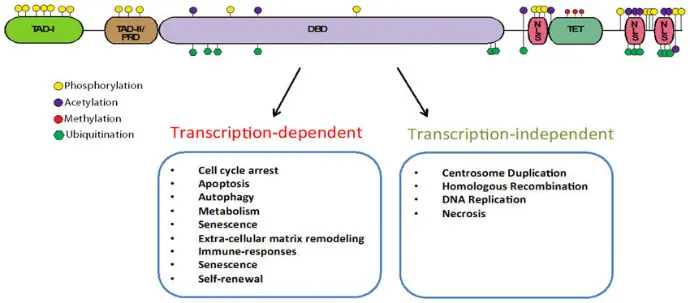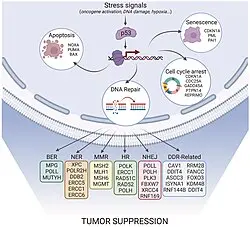In the intricate network of molecular biology, few genes hold as much influence over cellular fate as TP53, the gene encoding the tumor suppressor protein p53. Often referred to as the guardian of the genome, p53 safeguards cells from malignant transformation by orchestrating crucial responses to DNA damage, cellular stress, and oncogenic signals. Its role in cancer prevention has placed it at the center of biomedical research, with implications in diagnostics, therapeutics, and personalized medicine.
The Structure and Function of p53
The p53 protein is a transcription factor composed of several domains that enable DNA binding, regulatory interactions, and post-translational modifications:
- Transactivation domain (TAD): initiates transcription of target genes.
- DNA-binding domain (DBD): recognizes specific DNA sequences involved in cell cycle regulation and apoptosis.
- Oligomerization domain (OD): allows p53 to form tetramers, essential for its activity.
- C-terminal domain (CTD): regulates DNA binding and is modified by acetylation, phosphorylation, and ubiquitination.
p53 in Cellular Stress Response
Cell Cycle Arrest
Activation of p21 (CDKN1A) halts the cell cycle at the G1/S checkpoint.
This pause provides time for DNA repair mechanisms to correct mutations.
Apoptosis (Programmed Cell Death)
If damage is irreparable, p53 activates pro-apoptotic genes such as BAX, PUMA, and NOXA, initiating cell death to prevent the propagation of mutations.
DNA Repair
p53 induces genes like GADD45 and XPC, which facilitate repair of damaged DNA.
p53 and Cancer
The critical role of p53 in genome surveillance explains why it is mutated in over 50% of human cancers. Mutations in the TP53 gene often occur in the DNA-binding domain, impairing its transcriptional activity. These mutations can lead to:
Therapeutic Targeting of p53
Because of its central role, p53-based therapies are being actively explored:
- MDM2 Inhibitors: Molecules such as Nutlin-3 prevent MDM2-mediated degradation of p53, restoring its tumor-suppressive function.
- Gene Therapy Approaches: Introducing wild-type TP53 into tumor cells (e.g., with adenoviral vectors like Gendicine) has shown promise in some cancers.
- Targeting Mutant p53: Small molecules like APR-246 (Eprenetapopt) aim to refold mutant p53 into its functional conformation.



